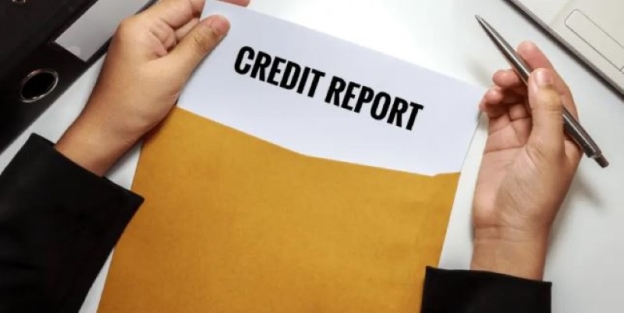How To Increase Credit Limit And Raise Your Credit Score
Ever wondered why your credit card limit seems stuck at the same number? Or why your credit score isn’t moving up even though you've been making payments on time? The truth is, improving both takes the right mix of timing, habits, and innovative financial moves. Let's explore practical ways to increase your credit limit and give your credit score a healthy boost.
Why Increasing Your Credit Limit Matters?
A higher credit limit doesn’t just give you more spending room—it can also improve your credit utilisation ratio. This ratio compares how much Credit you're using to your total available Credit, and it plays a big role in your credit score. The lower your utilisation, the better it looks to lenders.
For example, if you have a $3,000 limit and carry a $900 balance, your utilisation is 30%. If your limit increases to $6,000 and your balance stays the same, it drops to 15%, which can positively affect your score.
Steps To Increase Your Credit Limit
1. Ask For A Credit Limit Increase Directly

The simplest way is often to ask your card issuer. Many banks allow you to request an increase online or over the phone. They may run a credit check, so be prepared for a slight temporary dip in your score.
Tips for approval:
- Show a strong payment history. Six months or more of on-time payments build trust.
- Apply when your income has increased or your debt has decreased.
- Avoid requesting during periods of heavy spending or right after missed payments.
2. Accept Automatic Limit Increases
Some issuers review accounts periodically and offer increases without your request. This often happens when you consistently pay on time, use your card regularly, and keep balances low. If your bank offers this feature, make sure you’re opted in.
3. Open A New Credit Card
Opening another card can expand your total available Credit, lowering your utilisation ratio. Look for a card with no annual fee and benefits that match your spending habits. Keep in mind that new accounts can temporarily lower your score, so space out applications.
4. Link Multiple Accounts With The Same Issuer
If you have multiple cards from the same bank, some allow limit transfers. You can shift part of one card's limit to another, creating more Breathing room where you need it most.
How To Raise Your Credit Score While Increasing Your Limit
1. Keep Credit Utilisation Below 30%—Better Yet, Under 10%
Credit scoring models reward low utilisation. If you can, pay down balances before your statement closes to minimise your reported usage. Even if you pay in full each month, your utilisation is based on the balance at the time the lender reports to the bureaus.
2. Pay On Time, Every Time
Payment history makes up the most significant part of your score. Even a single late payment can have a lasting impact. Set up automatic payments for at least the minimum due to avoid missed deadlines.
3. Avoid Closing Old Accounts
Length of credit history matters. Closing an old card can shorten your average account age and reduce total available Credit, both of which may lower your score. If you don't use an old card often, make a small purchase occasionally to keep it active.
4. Spread Out Credit Applications
Each new application triggers a hard inquiry, which can slightly lower your score. Too many inquiries in a short time can signal risk to lenders. Apply only when necessary and space them by several months.
5. Check Your Credit Reports For Errors

Mistakes on your credit report can drag down your score without you realising it. You're entitled to a free copy of your report from each major bureau (Experian, Equifax, and TransUnion) once a year at AnnualCreditReport.com. Dispute any inaccuracies you find.
Example Scenarios: How This Works In Real Life
Scenario 1: The Utilisation Drop
Maria has one credit card with a $4,000 limit and usually carries a $1,600 balance (40% utilisation). She requests a limit increase to $8,000 and is approved. Without changing her spending, her utilisation drops to 20%. Over the next two months, her score rises by 25 points.
Scenario 2: The Payment History Boost
James opens a second card with a $5,000 limit but keeps his total spending at the same level. He sets up automatic payments to avoid late fees. After six months of perfect payment history and lower utilisation, his score improves enough to qualify for a better mortgage rate.
Myths About Credit Limit Increases And Scores
Myth 1: A Higher Limit Encourages Overspending
It can—but only if you treat it like extra cash to spend. Used wisely, it's a tool to lower utilisation and improve your credit profile.
Myth 2: Requesting An Increase Always Hurts Your Score
Not always. If the issuer uses a soft inquiry, your score won't be affected. Even with a hard inquiry, the potential benefit from lower utilisation can outweigh the slight, temporary dip.
Myth 3: You Should Never Have More Than One Credit Card
Having multiple cards can be beneficial, provided you manage them responsibly. More accounts mean more available Credit, which can improve utilisation and your score.
Smart Habits To Keep Your Score Climbing
- Use Credit Regularly, But Lightly: Small, consistent charges that are paid off quickly show responsible use.
- Pay More Than the Minimum: This reduces your balance faster and saves on interest.
- Stay Informed: Many credit card apps now offer free credit score tracking—use it to spot trends.
Growing Your Credit The Right Way
Boosting your credit limit and improving your score takes time, but each positive step compounds over time. Treat a higher limit as a trust you've earned, not as an invitation to spend more. Keep balances low, payments on time, and accounts open.
A few smart moves now can lead to better loan approvals, lower interest rates, and greater financial flexibility in the future. Your Credit is more than a number—it's a reflection of how you manage opportunity.